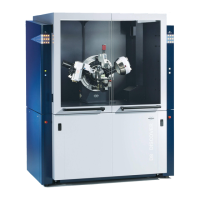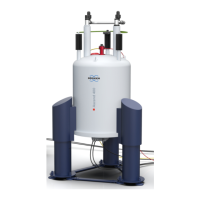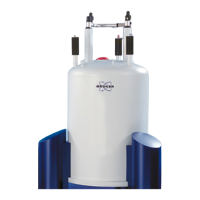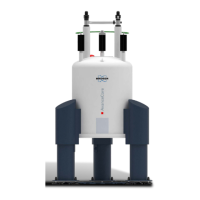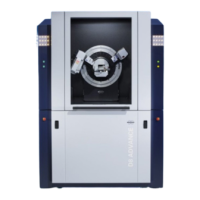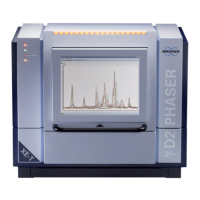System Description
H171804E_14_001 25 / 86
4.2 Console
This unit may be a NanoBay, OneBay, or TwoBay bay depending upon the system and
houses most of the electronic hardware associated with a modern digital spectrometer. The
principal units are the AQS, the BSMS (Bruker Smart Magnet System), as well as various
amplifiers and gradient amplifiers (in the case of MicroImaging or Diffusion.
AQS: The various units within the AQS generate the radio frequency pulses used to excite
the sample and receive, amplify and digitize the NMR signals emitted by the sample. For
each RF channel, there is a transceiver (TRX 1200) which interprets the pulse program, turns
it into RF signals and includes a receiver, digitizer and digital filtering of the data. That means
that an AVANCE console is a genuine multi-receive system which by design has as many
receivers as pulse excitation channels. Pulsed Field Gradients are generated by an additional
unit called GTU (Gradient and Trigger Unit). This unit also generates real-time triggers used
to synchronize other units and receives trigger inputs (e.g. the MAS rotor trigger). A common
clock signal for all channels is provided by the REF board (Reference). Thus, all frequencies
in the RF chain are derived from one high precision quartz oscillator to ensure overall
synchronicity and low noise levels. The AQS also houses the EPU. This is a powerful
computer which administrates the AVANCE spectrometer, sends the pulse program
information to the TRX and GTU units, provides the acquisition control and communicates
with external data processing workstations. The last stage of digital filtering is done in the
EPU as well as the accumulation of the FID data. The information is then transferred via
Ethernet to an external host computer for further processing and storage. It is important to
emphasize that the EPU has total control over spectrometer operation within the duration of
an experiment. This is to ensure uninterrupted operation and to guarantee the integrity of the
acquisition.
BSMS: This system is controlled via software using the ‘bsmsdisp‘ command) and is used to
operate the lock and shim system as well as controlling the sample lift and spin. The BSVT
unit is also incorporated into the BSMS. Its function is to vary the sample temperature in a
controlled manner or maintain it at a constant value. In addition, up to three GAB/3 can be
placed into the BSMS rack. They provide the pulsed field gradients for high resolution probes
and are controlled by the GTU.
Amplifiers, also known as Transmitters. Signals of relatively large amplitude are often
required to excite the NMR sample and hence the need to amplify the RF signals from the
TRX units. Amplifiers can be internal (incorporated into the AQS rack) or external (separate
stand-alone units). Cables running directly from the amplifier outputs to the HPPR (High
Performance Preamplifier) carry the RF signal to the sample. Although there is a wide range
of available amplifiers (including solid amplifiers) the two main categories are:
Selective amplifiers , for example,
1
H,
19
F,
13
C or
31
P selective amplifiers, are specifically
designed to amplify the higher frequencies associated with
1
H,
19
F,
13
C or
31
P.
Broadband amplifiers (also known as X amplifiers) are designed to amplify a wide range of
frequencies. They are used for the excitation of the so-called X nuclei (i.e., typically
everything except
19
F and
1
H).
Please note that the new broadband amplifiers also cover
19
F up to 600 MHz, which simplifies
the use of SMART Probes and BBFO probes where the broadband X coil can be tuned up to
19
F.
PDU: A Power Distribution Unit in the back of the console is used to power up the
spectrometer in a controlled way. It is possible to power up/down the AVANCE by a software
instruction from TopSpin. The PDU takes care that all units are powered up/down in the
correct order and that high power units are switched on with suitable time delays in order to
limit the inrush current of the system.
